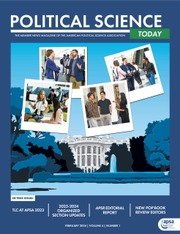Since the 1980s over 100 indiscriminate school shootings have taken the lives of dozens of adults and children across 40 states. Each school shooting sparked debates about gun control, with Democrats increasingly advocating for stricter gun laws and Republicans increasingly opposing them. Gun violence has certainly divided the country along partisan lines, but has it influenced the public’s political behavior? Political scientists Laura García-Montoya, Ana Arjona, and Matthew Lacombe investigate this question in their recent American Political Science Review study. In particular, they examine whether people who live in counties that experience school shootings change their voting behavior. García-Montoya, Arjona, and Lacombe find that gun violence in schools does not increase voter turnout, but it does shift the public’s vote in favor of Democrats during presidential elections.

To understand how indiscriminate school shootings, or what they call “rampage school shootings,” influence voting behavior, they first explore whether these rampage school shootings increase or decrease voter turnout. While some research suggests that the experience of or exposure to violence increases people’s political participation, other research finds that some violence suppresses voting. To reconcile these mixed findings, they use a method called a difference-in-difference design to compare the electoral outcomes in counties where a shooting occurred with demographically similar counties in which no shootings took place. They first collected a list of rampage school shootings that occurred in the United States between 1980 and 2016 from Wikipedia, excluding any gang-related shootings, suicides, and shootings arising from disputes. They cross-checked newspaper articles that covered each incident and included the details of each attack and their geographical location, categorizing counties by whether they experienced rampage school shootings or not during the years between presidential elections. In addition, they collected data on the electoral results of presidential elections by county during the same time period. When they compared the electoral outcomes of the counties that experienced rampage school shootings with counties that did not, they found that school shootings did not affect voter turnout in presidential elections.

While school shootings did not change voter turnout in presidential elections, García-Montoya, Arjona, and Lacombe suspected that school shootings might have still impacted the vote share of each party. They argued that the public’s beliefs about which party is better at providing them protection from threats, such as gun violence, would influence which party the public would support. Indeed, they found that the public’s vote for Democrats in presidential elections increased, on average, by 4.51% following a school shooting. Furthermore, school shootings that resulted in at least one death led to an average increase in the Democratic voter share of 4.4%. Even when only comparing affected counties with neighboring counties, they found that a school shooting led to a 3.63% average increase in the Democratic vote share and that, if a death occurred, it led to a 2.79% average increase. Moreover, school shootings affected voting behavior even in more competitive counties and in swing states, where voting mattered more. The shooting’s proximity to election day did not appear to matter much— the number of days between the shooting and election did not significantly change support for Democrats.
García-Montoya, Arjona, and Lacombe argue that Democrats have likely succeeded in “owning” the issue of gun control, evidenced by a shift in votes in favor of Democrats following a school shooting. To test this theory, they use Giffords Law Center’s scorecard that ranks states from “more strict” to “less strict” based on their gun regulations, and compare the electoral behavior depending on that level of gun law strictness. They find that school shootings in counties that are in states with stricter gun laws actually have a smaller effect on the Democratic vote share. In other words, school shootings that occur in states that do not have strict gun laws actually increase support for Democrats, compared to states that already have stricter gun laws. Overall, it appears that when people have reason to feel personally impacted by school shootings, they will make their voices heard at the polls.■
GarcÍa-Montoya, Laura, Ana Arjona, and Matthew Lacombe. 2021. “Violence and Voting in the United States: How School Shootings Affect Elections.” American Political Science Review, 1—20. https://doi.org/10.1017/S0003055421001179


